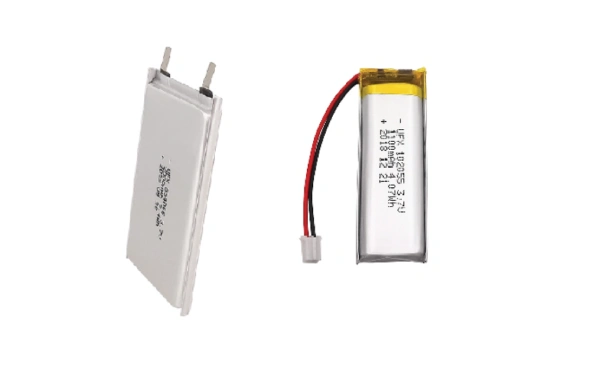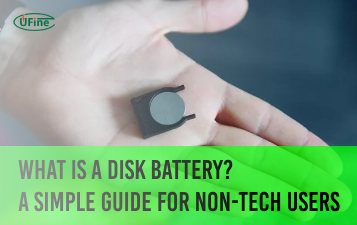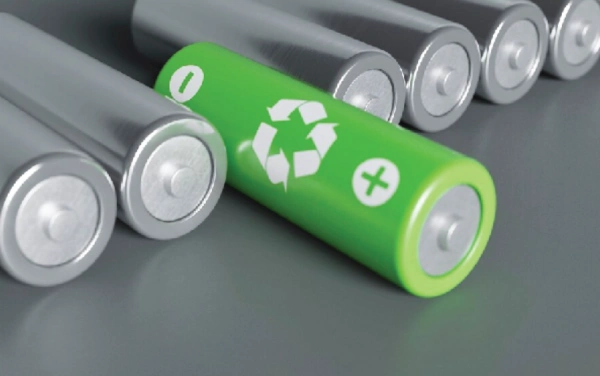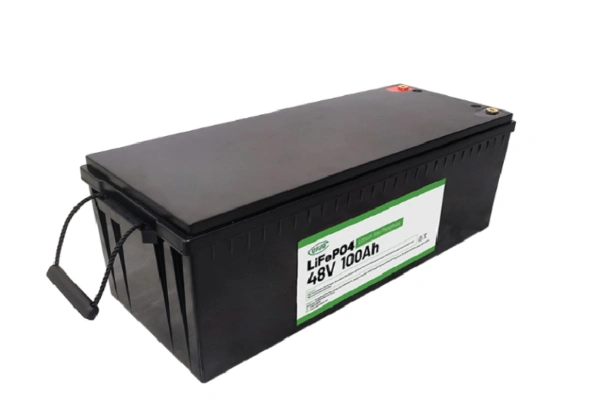As technology is continuously updating, people prefer to use portable things. Everything comes with modern features, from vehicles to electronics, and is relevantly more minor in size than the previous models. Hence, it is essential to understand the concepts of different rechargeable battery sizes. If we discuss lithium battery sizes, they stand in the market for their efficiency and versatility.
So, in this article, we will describe the various aspects of lithium battery sizes. Moreover, we will provide detailed insights into their dimensions, comparisons, and real-world applications.
Part 1. Lithium Ion Cell Sizes
Common Dimensions of Lithium Ion Cell Sizes
Lithium-ion battery cells are generally used as rechargeable energy storage units. So, it has a wide application in our daily use of electronics, electric vehicles, and energy storage systems. The most common lithium-ion battery cell sizes may include cylindrical, prismatic, and pouch cells. They all come with different dimensions and characteristics.
Comparison of Lithium Ion Cell Sizes
The li ion battery cell sizes have wide applications in several electronic devices. These applications may include LED art, digital watches, automobile remotes, or computer motherboards. Hence, they are now becoming a crucial part of our daily lives. So, it is important to know the specifications and applications of lithium-ion battery cells so you can select the appropriate power source for your devices. Here is a detailed table of commonly used lithium-ion battery cells.
Ufine Lithium-Ion Battery Cell
Ufine Battery is your trusted custom battery manufacturer of portable power sources. So, it provides you with cutting-edge power solutions and delivers exceptional performance and reliability. Ufine lithium-ion battery cells provide unmatched features and fulfill diverse industrial needs.
Ufine Lithium-Ion battery cell (3.7 V 2000mAh Lithium Ion Battery 654065) provides you with a high energy density. So, it can store maximum energy in a compact and even lightweight package. So, not only this, it has a longer cycle life. Moreover, it has low seld-discharge, which helps it maintain power for a longer period. Besides this, it comes with protection against overcharging and short-circuits and saves you from any accident.
Thus, the Ufine Lithium-Ion Battery Cell sizes are a smart choice for your electronic devices. So, as it is eco-friendly and safe, it can be used in beauty devices, medical devices, LED lights, 3C digital products, pet toys, and massage devices.
Part 2 .Lithium Ion Battery Sizes
Common Dimensions of Lithium Ion battery sizes
The lithium-ion battery is a game changer in the electronic world. So, they come in various standard dimensions. Typically, they are denoted by a combination of their numbers, which show their height, width, and thickness (all in millimeters).
This variety of lithium-ion battery sizes is widely used in different industries for a range of applications, such as electronics and electric vehicles.
The most commonly used lithium-ion cell sizes are 18650 (18mm diameter, 65mm length), 21700 (21mm diameter, 70mm length), and 26650 (26mm diameter, 65mm length).
Lithium Ion Battery sizes comparison
Lithium-ion battery cells are a revolutionary invention for the portable electronics and energy storage. They have high energy density, lightweight design, and long cycle life. So, it is essential to know the different sizes, specifications, and uses of lithium-ion battery cells. We can select the right power source for our electronic devices.
So, the table below gives detailed insight into and comparisons of different rechargeable lithium-ion battery sizes. It includes their capacities, sizes, dimensions, and common applications. So, whether you have a small gadget or a high-capacity storage system, this table will guide you through the diverse options available for lithium-ion and different battery sizes based on size.
| Battery Size | Similar Size | Capacity (mAh) | Diameter (mm) | Length (mm) | Uses |
|---|---|---|---|---|---|
| 10180 | N/A | 70 – 100 | 10.1 | 18 | Used in small electronic devices like Bluetooth earphones, keychain flashlights, and other miniature gadgets. |
| 10440 | AAA | 250 – 350 | 10 | 44 | Mainly used in mini electronic products such as tiny flashlights, mini stereos, loudspeakers, etc. |
| 14500 | AA | 700 – 1000 | 14 | 50 | Consumer electronics such as LED flashlights, wireless audio, electric toys, digital cameras, etc. |
| 16340 | CR123A | 400 – 900 | 16 | 34 | LED flashlights, headlights, laser lights, etc. |
| 18350 | N/A | 700 – 1200 | 18 | 35 | Commonly used in vaping devices, portable flashlights, laser pointers, and electronic toys. |
| 18490 | N/A | 1200 – 1500 | 18 | 49 | Usually used in high-powered LED flashlights, portable power banks, and emergency lighting systems. |
| 18650 | / | 1500 – 3500 | 18 | 65 | Used in many laptop computer batteries, cordless power tools, certain electric cars, electric kick scooters, most e-bikes, vaping, and LED flashlights. |
| 21700 | / | 3000 – 5000 | 21 | 70 | E-bikes, solar street lights, LED lights, portable power tools, etc. |
| 26650 | / | 2400 – 5750 | 26 | 65 | For radio control hobby use. Also used in larger, high-powered LED flashlights and some electronic cigarettes. |
| 32700 | N/A | 6000 – 9000 | 32 | 70 | Suitable for high-capacity energy storage applications like electric vehicles, solar energy storage, and large-scale backup power systems. |
| 32650 | / | 5000 – 6500 | 32 | 67.7 | Generally best for backup power supply, UPS batteries, wind power generation systems, electric toys, and wind-solar complementary power generation systems as well. |
| 38120 | N/A | 8000 – 12000 | 38 | 120 | Have Applications in high-capacity energy storage systems, such as electric vehicles, large-scale renewable energy storage, and UPS backup systems. |
| 40152 | N/A | 10000 – 15000 | 40 | 152 | Particularly designed for high-capacity energy storage applications like electric vehicles, solar energy storage, and large-scale backup power systems. |
Ufine lithium-ion battery
Ufine Battery is at the forefront of the custom lithium battery manufacturer. It specializes in making a variety of lithium battery types to meet the unique demands of several industries and daily-life applications.
These batteries epitomize reliability, safety, and high efficiency. Moreover, these power solutions never let down the customers and always excel in performance, longevity, and environmental responsibility.
So, here are some unique features of Ufine Lithium-ion batteries;
- Lightweight
- Low self-discharge
- Long cycle life
- Built-in protection
Part 3 . Largest Battery Size
Some applications demand high-energy storage. In that case, the largest lithium battery sizes are the best option. This application may include electric vehicles, industrial backup power, or renewable energy storage systems. So, large-sized batteries are designed using lithium chemistries so that their battery life and performance can be increased.
Ufine’s largest lithium battery
Ufine is providing an extensive range of lithium batteries. These include the largest size lithium battery, i.e., 48V 100Ah LiFePO4 battery. This battery has high capacity and is specifically built for demanding applications that need reliable and long-lasting power sources.
So, here are some notable features of Ufine’s 48V 100Ah LiFePO4 battery;
- Have stable chemical and thermal properties, so the combustion risk is reduced.
- Durable and have a long lifespan through multiple charge cycles.
- Offers steady voltage for consistent power delivery.
- Eco-friendly, non-toxic, and best for sustainable use.
- Have a fast charging cycle to reduce downtime.
Part 4 .Smallest Battery Size
As we discussed earlier, large-size batteries are used for high-energy applications. So, the smaller lithium batteries are useful for IoT devices, wearable technology, and compact electronic devices. They provide sufficient power in small form factors. That enables the development of portable and lightweight gadgets.
Ufine’s smallest battery size
If we particularly talk about Ufine’s small-size lithium batteries, they offer a range of compact lithium batteries. This includes their smallest size lithium battery – the 3.7V 300mAh lithium-ion battery. Although it comes in a small size, it is considered an act of punch as it provides reliable power for several low-power applications.

Ufine’s Smallest Size Lithium-ion battery
So, here are certain features of Ufine’s 3.7V 300mAh lithium-ion battery.
- It works well even at -40oC, so it is ideal for extreme environmental conditions.
- Provides consistent power to several electronics.
- It has a long lifespan. So, it is cost-effective
- Protects against overcharging or short circuits.
So, it is a perfect fit for electronic appliances that need less power.
Part 5 .Conclusion
So, to sum up the whole discussion, lithium-ion batteries are available in several sizes and can be used in small to large applications. The only thing that matters is what size you are choosing for your needs. So, you must have enough knowledge about the size and capacities of lithium-ion batteries, i.e., the largest 48V 100Ah LiFePO4 battery for demanding tasks or the smallest 3.7V 300mAh lithium-ion battery for compact electronics. So, just make sure to select the battery carefully.
Part 6 .FAQs
-
Which are the most common lithium-ion battery sizes for electronics?
The most common lithium battery sizes for electronics are 18650, 21700, and lithium polymer pouch cells. -
Are lithium-ion battery sizes smaller than other types of batteries?
Yes, lithium battery sizes are generally smaller and lighter than those of traditional battery chemistries like lead-acid or nickel-metal hydride. -
Can lithium battery sizes affect device performance? How?
Yes. So, choosing the right Lithium Battery Size is important because it can affect the device’s runtime, power output, and overall performance. -
What are the standard dimensions for lithium battery cells used in electric vehicles?
Several standard sizes, such as 18650 and 21700, are commonly used in electric vehicle battery packs. -
How do I choose the right lithium battery size for my application?
Go through the factors such as required capacity, physical space available, voltage requirements, and weight restrictions. Then, select a suitable lithium battery size for your application. -
What safety measures should be taken when using lithium batteries of different sizes?
Safety is important when handling lithium batteries. So, always follow manufacturer guidelines and avoid physical damage. Moreover, appropriate charging and storage practices should be used to control the risk of fire or explosion.
Related Tags:
More Articles

What Is a Disk Battery? A Simple Guide for Non-Tech Users
A disk battery is a small, round cell used in watches, remotes, and other electronic devices. It delivers steady power for compact, low-drain devices.
What Battery Powers a Space Heater?
Discover the type of battery that powers space heaters and learn how to choose the right one for efficient heating in your home or office.
What Is an LR14 Battery? Learn About This C-Size Cell
The LR14 battery, also known as a C battery, delivers steady power. Learn its specs, uses, lifespan, and how it compares to other battery types.
Watch Battery Dimensions Chart: Sizes, Voltages, and Equivalents Explained
Understanding watch battery dimensions helps you choose the right size, voltage, and equivalent model to keep your watch running safely and smoothly.
How Long Can You Rely on Battery-Powered Generators?
Discover battery generator runtime & lifespan factors. Learn how to maximize performance and choose the right power solution.





